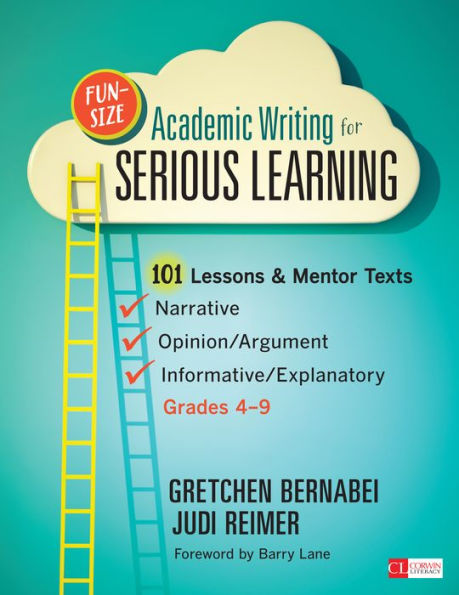5
1
9781452268613



Fun-Size Academic Writing for Serious Learning: 101 Lessons & Mentor Texts--Narrative, Opinion/Argument, & Informative/Explanatory, Grades 4-9 / Edition 1 available in Paperback, eBook

Fun-Size Academic Writing for Serious Learning: 101 Lessons & Mentor Texts--Narrative, Opinion/Argument, & Informative/Explanatory, Grades 4-9 / Edition 1
- ISBN-10:
- 1452268614
- ISBN-13:
- 9781452268613
- Pub. Date:
- 08/06/2013
- Publisher:
- SAGE Publications
- ISBN-10:
- 1452268614
- ISBN-13:
- 9781452268613
- Pub. Date:
- 08/06/2013
- Publisher:
- SAGE Publications

Fun-Size Academic Writing for Serious Learning: 101 Lessons & Mentor Texts--Narrative, Opinion/Argument, & Informative/Explanatory, Grades 4-9 / Edition 1
$39.95
39.95
In Stock

Product Details
| ISBN-13: | 9781452268613 |
|---|---|
| Publisher: | SAGE Publications |
| Publication date: | 08/06/2013 |
| Series: | Corwin Literacy |
| Pages: | 264 |
| Product dimensions: | 10.90(w) x 8.50(h) x 0.70(d) |
About the Author
From the B&N Reads Blog
